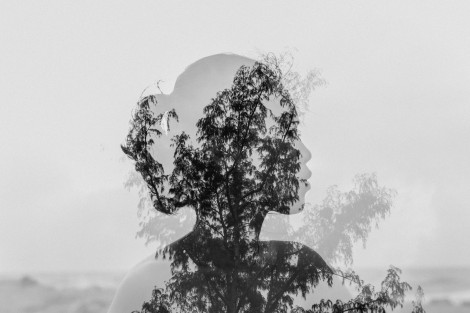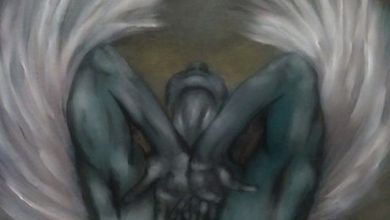
The themes of confidence, acceptance, innocence, appearance, insecurity, control, rejection and failure are explored in Henry Richardson’s And Women Must Weep. Told in the third person by an unnamed narrator, the story takes place in an extravagant ballroom. It represents societal values and expectations, the most obvious of which is that men choose and dominate.
And Women Must Weep | Summary and Analysis
The story begins with the protagonist Dolly about to embark on a new phase of her life. Her aunts are physically preparing her by dressing her up. She obsesses over the fabric’s weave, noticing how her appearance has changed as a result of her new attire. The significance of appearances is depicted very clearly. She’s pleased that she meets the definition of a pretty girl, but she feels sorry for those who don’t, emphasizing the importance of beauty standards. The ball is given a great deal of importance. Her Auntie Cha tells her that she needs to fake her emotions to be acceptable to her future partner. Even the tiniest flaw can draw a lot of attention. Dolly tears her dress a little as she exits the cab. Although the tear was not particularly large, it caused all references to her dress to be negative. Mistakes in dancing are once again given more attention. The man does not have to apologize if he messes up the dance; it is only her induced mistake that requires an apology. In the aftermath of the humiliation, she smiles while holding back tears.
Auntie Cha advised her to sit in the front row, which she does, but the men in the room still reject her. She is unsure of what she did wrong and despises all of the men present. Every time she thinks the man is looking at her and about to ask her to dance with him, she is disappointed. She sits in the front row, undecided about what she should do; should she watch the couples dance, or should she avoid giving the impression that she is jealous? She pretends to be reading the programme, but she knows she won’t be able to look at it for long, so she tucks it under her dress.
Her displeasure with the pressure to fit in is also demonstrated by the way she chokes on a sandwich. It was considered shameful to be unattractive enough to attract suitors. The ladies are supposed to invite the men to the “leap-year dance,” and Auntie Cha tells Dolly that this is her last chance. Dolly, on the other hand, refuses, claiming that she should not volunteer because the men did not ask her to dance. Later, a little boy danced with her, but she didn’t come to dance with the little boys, so she didn’t like it. Miss Biddons, inquires about the ball when they return home, and Aunty Cha exclaims, “She didn’t take!”. Dolly would have to hear the slur “to have failed to attract the gentleman” for the rest of her life. Dolly is hiding in her room because she doesn’t want to see anyone, and everyone sympathizes with her because no one danced with her at her first ball. Despite her best efforts, she has been deemed a failure to society through no fault of her own.
“And Women Must Weep”- “For men must work” | Analysis
Within the first paragraph, the undertones and themes of this short story become clear. This story examines women’s vulnerability in a male-dominated society, as well as the social pressures they face.
Dolly, the main character in “And Women Must Weep,” begins the story by recounting her preparations for a Leap Year Ball. Her behaviours exemplify the subconscious desire of women which is to be told at every juncture of their life how to behave. Women have been taught to be flawless and airbrushed in order to appeal to and please men.
‘Instead of sitting, she stood very stiff and straight at the window … her long white gloves hanging loose over one arm so not to soil them,’
Auntie Cha represents the female figure in every girl’s life who instructs her on how to act, speak or not speak and appeal to men, among other things, which is something that girls are taught from the beginning. Auntie Cha exemplifies her common role by meticulously inspecting and ironing out every crease, both literal and figurative, that could possibly turn a gentleman away, as this is the greatest fear women have. Chastising in a way that appears to be helpful and kind only serves to reinforce the societal expectation that women must achieve and maintain perfection in order to be deemed suitable by a man :
“Now, Dolly, remember not to look too serious. Or you’ll frighten the gentlemen off.”
“For goodness sake, try and look agreeable,”
Dolly’s internal reaction, when asked or commanded to dance, exemplifies how women will put themselves through things they don’t want to do in order to please the man and conform to society’s pressures and rules. The use of phrases like ‘take me’ and ‘taken’ in reference to being chosen by a man reinforces the idea that women are male property that can be owned and traded from one man to the next. Dolly’s shame at not being “taken” and “failing to attract gentlemen at the ball” exemplifies how social pressure on women can be crushing, because a woman is totally meaningless without a man.
“And Women Must Weep”- “For men must work” | Themes
And Women Must Weep by Henry Handel Richardson explores the themes of confidence, acceptance, innocence, appearance, insecurity, control, rejection, and failure. Dolly is confident in herself before going to the ball. When she arrives at the ball, however, her confidence is quickly replaced by a sense of insecurity as she notices the dresses worn by the other girls. It’s also noticeable that the longer Dolly sits in the chair watching others dance, the more apprehensive she becomes and the less confident she becomes. She constantly shows that she is available to dance with anyone. Dolly is attempting to conform to society’s ideals, but she is clearly failing. The ball acquires significance and the writer could be implying that society and its priorities only add to the individual’s sense of pressure. The ball is a symbol of societal values and traditions. A notable tradition that runs throughout the story is that, with the exception of the leap dance, it is the gentleman’s responsibility to invite the lady to dance. It’s as if the lady’s options are limited. The lady’s ability to choose is also taken away.
“And Women Must Weep”- “For men must work” | Title of the Story
The title of the short story is based on Charles Kingsley’s poem “The Three Fishers.” It indicates to the reader that this will be a feminist story. The title is expressive; “weep” establishes an immediate connection with the reader and suggests vulnerability. It makes you question your own beliefs by presenting the mindset without puffery, forcing you to examine your own views on women’s roles in society.
“And Women Must Weep”- “For men must work” | Character Sketch
Dolly – Dolly is the young and naive protagonist who is thrown into a sea of random people and told that she must win their approval by upholding values that she played no part in creating. Despite the fact that she does not express individualism, she is still told to carve a mould for herself. She is ultimately rejected at the ball and must live the rest of her life with the stigma of failing to “attract the gentleman.”
Auntie Cha- Aunty Cha represents society’s expectations and its oppressive role. Despite being a woman, she also acts as the bearer of patriarchy. She has complete control over Dolly and eventually destroys her confidence by making cruel remarks when she is unable to meet her expectations perfectly. This command can be seen in the way she instructs her on how to alter her appearance.
“And Women Must Weep”- “For men must work” | Literary Devices
Foreshadowing – Dolly is confident in herself before going to the ball. When she arrives at the ball, however, her confidence is quickly replaced by a sense of insecurity as she notices the dresses worn by the other girls. This could be significant because Richardson could be using Dolly’s thoughts on her appearance as a foreshadowing of the ultimate failure she feels later in the story when she is rejected by the gentlemen and instead of being asked to dance, she spends the majority of the evening sitting in her chair.
Symbolism- The writer has used a variety of symbols to represent various ideas. The flowers in Dolly’s hair and her pale blue dress represent her innocence, the ball represents patriarchy, her slamming her door is a metaphor for her isolating herself from society and tearing the dress apart symbolizes how little value she now places on it.
“And Women Must Weep”- “For men must work” | About the Author
Ethel Florence Lindesay Robertson goes by the pseudonym Henry Handel Richardson. She was born in Melbourne, Australia, on January 3, 1870. Her trilogy The Fortunes of Richard Mahony is regarded as the pinnacle of modern Australian fiction, combining descriptions of an Australian immigrant’s life and work in the goldfields with a powerful character study. Some of her other important works are Maurice Guest (1908), Australia Felix (1917), The Way Home (1925), Ultima Thule (1929) and The Young Cosima (1939). She died in Sussex, England, on March 20, 1946.


